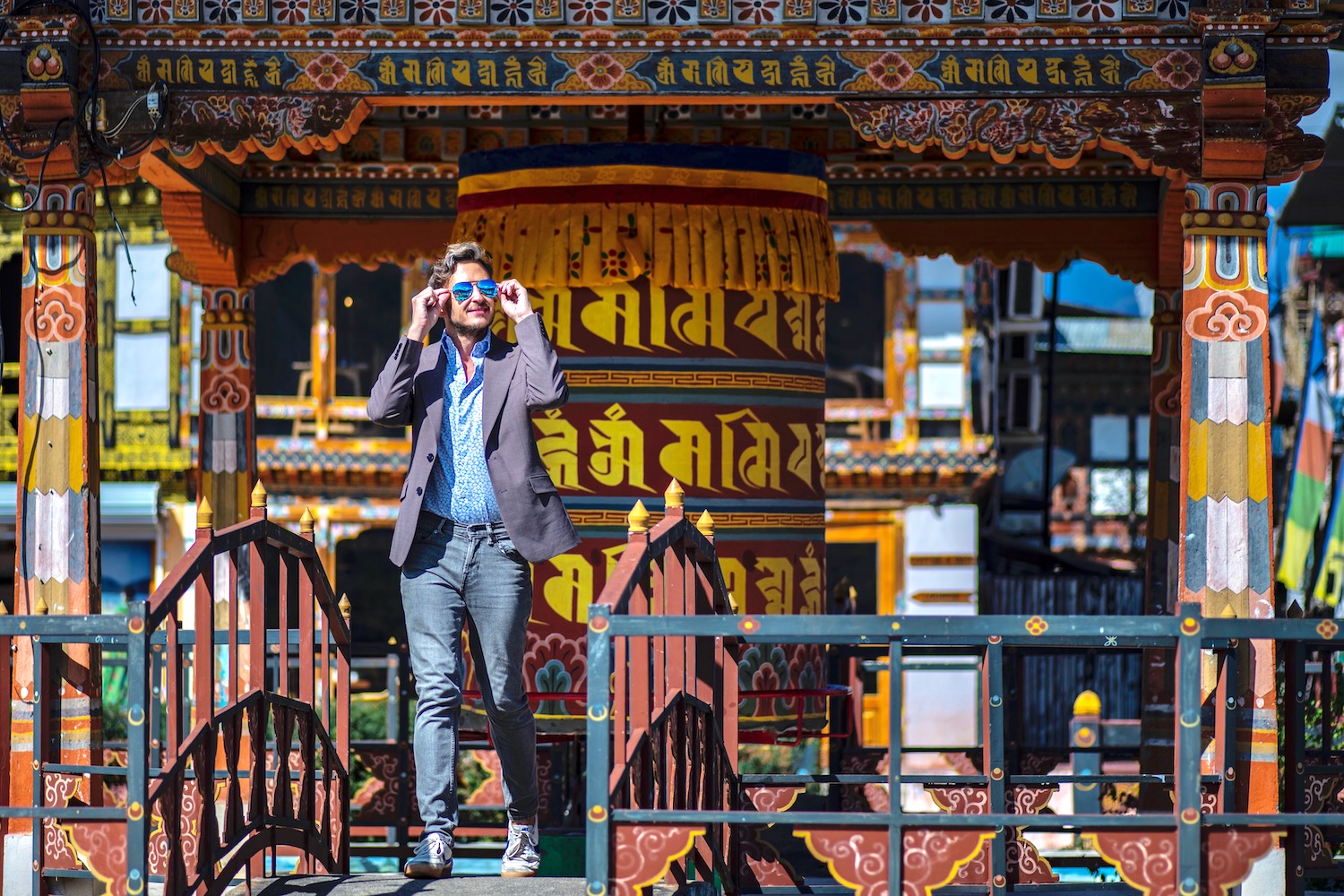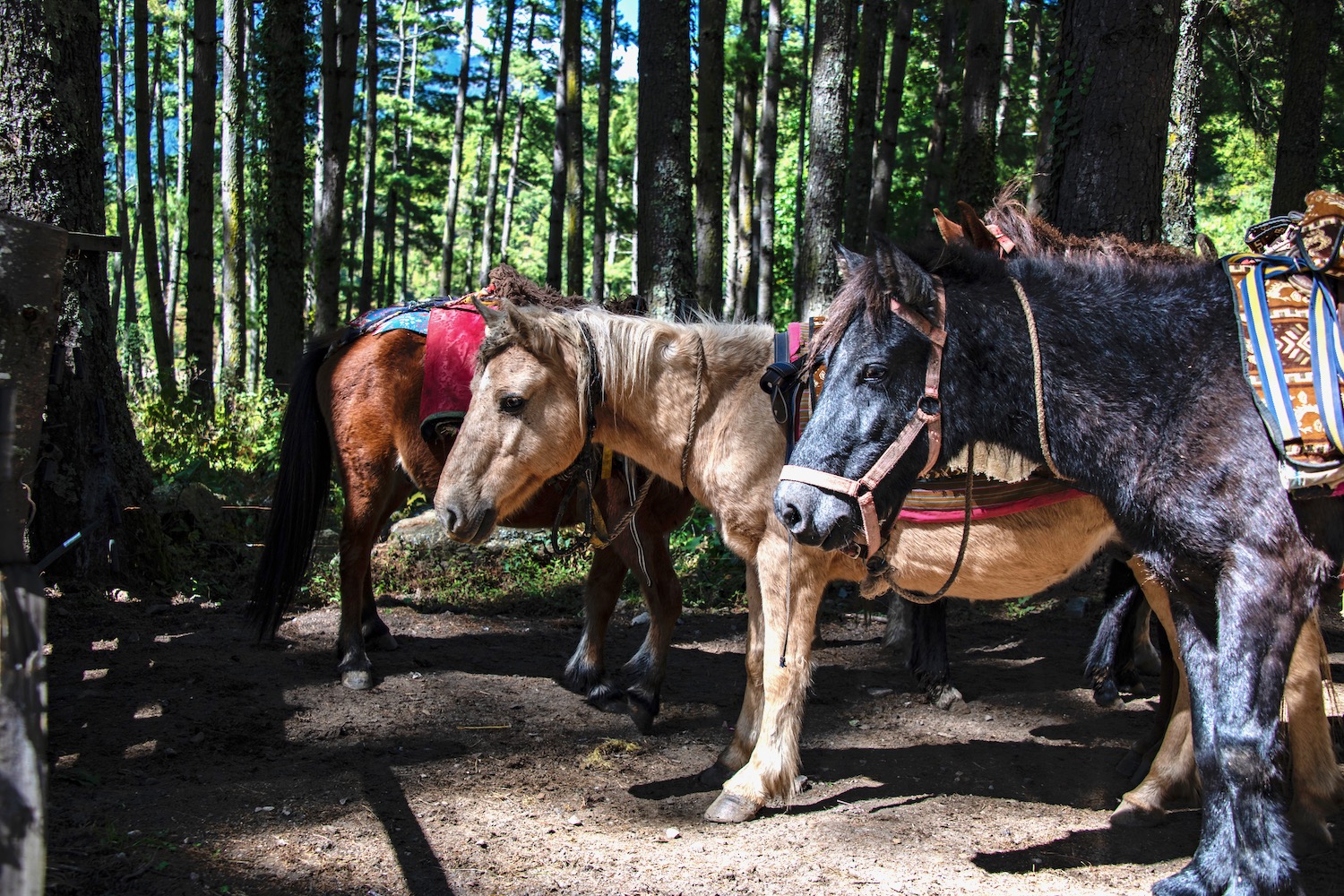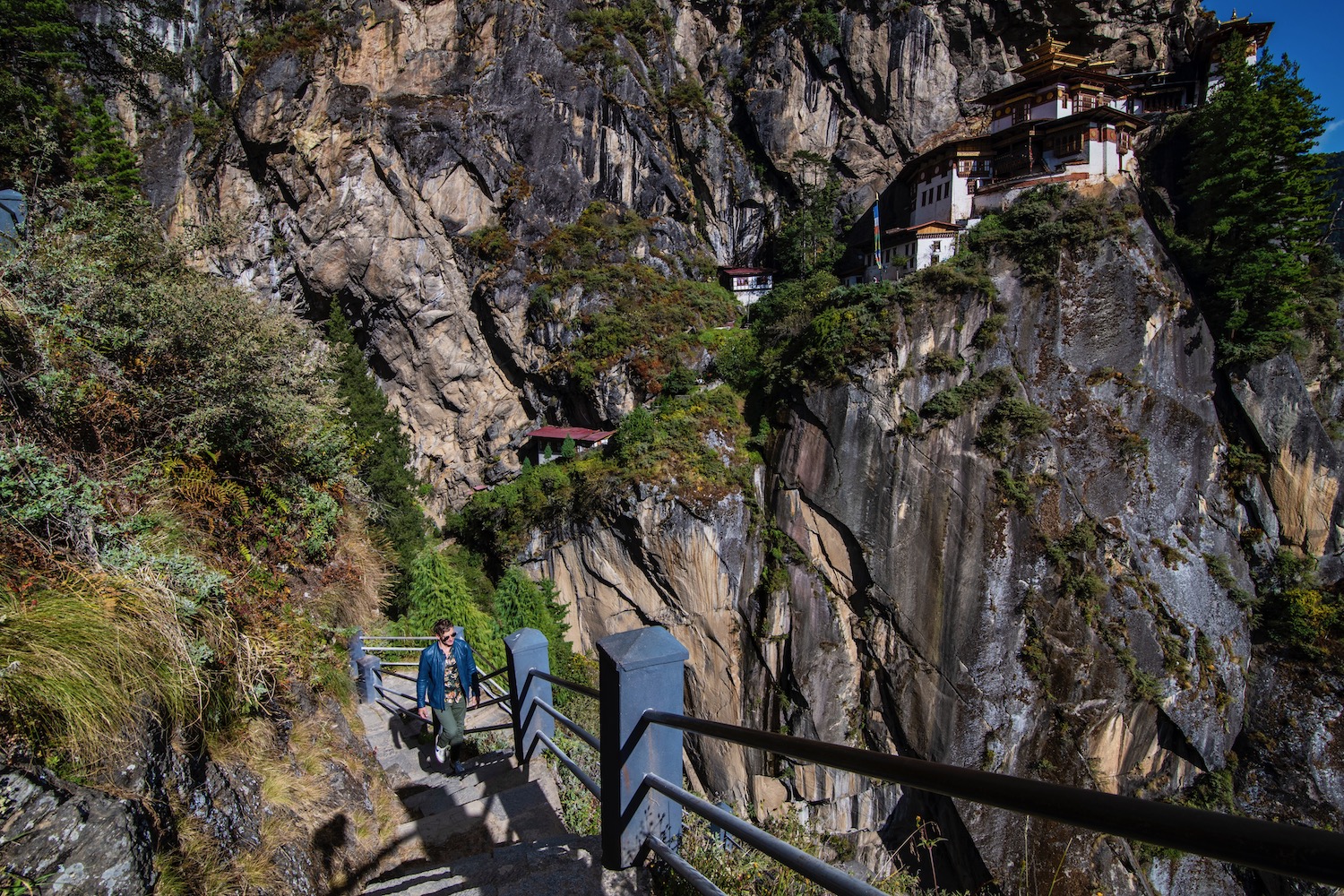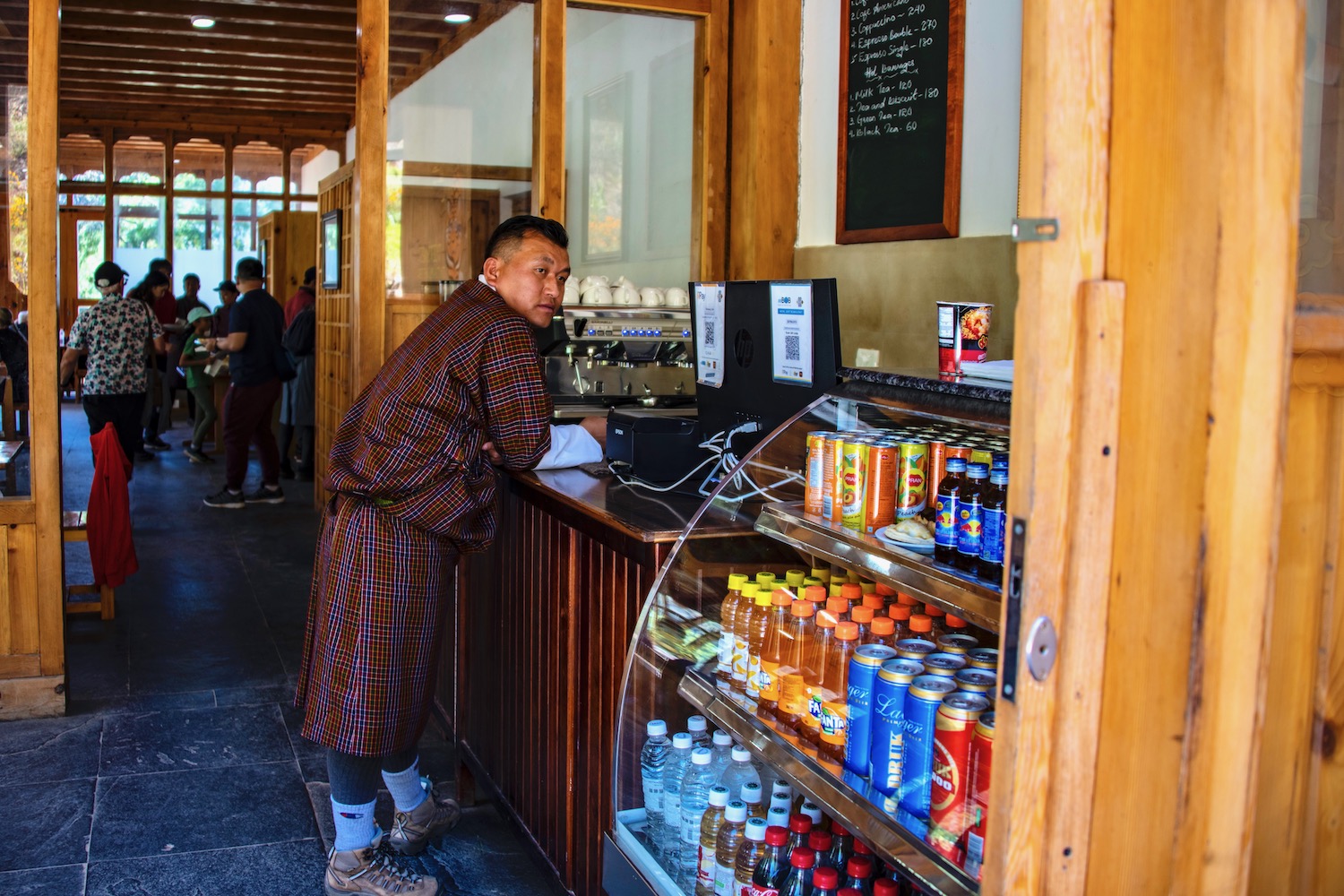Broadly speaking, it’s not inaccurate to say that I found Bhutan disappointing. “Disappointing” might be too strong a word, actually, but the country definitely wasn’t as amazing as its reputation suggests.
It’s ironic, then, that my favorite single experience in Bhutan was also its most famous, hyped one. I’m talking, of course, about Paro Taktsang Monastery, more famously known (at least in English) as the Tiger’s Nest.
Continue reading to learn not only about why I found the Bhutan Tiger’s Nest Trek so fulfilling, but also how to follow in my footsteps and do it yourself.
I Was Skeptical About the Tiger’s Nest
As you search for information about travel to Bhutan, the Tiger’s Nest Trek is almost always first on the list. It’s also the centerpiece of the expensive luxury tours that were compulsory in Bhutan prior to the country’s post-covid reopening. Whenever too many people are crazy about something, I’m skeptical that it can’t possibly live up to expectations.
In the case of the Tiger’s Nest, I was also doubtful that the trek itself would be exhilarating, regardless of how I might’ve ended up feeling about the monastery itself. Many travelers to Bhutan are old and even decrepit; what might be a thrilling adventure for someone twice my age could easily end up being a walk in the park (i.e. boring) for someone like me.
How to Trek the Tiger’s Nest
Get yourself to Paro

The Tiger’s Nest is about 20 minutes outside of central Paro, which means that Paro is your most realistic base for trekking there. You could technically come here on a day trip from Thimphu, and doing so wouldn’t be catastrophic on the way where. After finishing, however, you’ll want to be able to get “home” quickly; you’ll be wiped out.
(And to the Taktsang trailhead)

Notice I said “outside of Paro.” The Bhutan Tiger’s Nest Trek, expectedly, begins more or less in the middle of nowhere, rather than in the middle of the city. It’s important that if you are coming from outside of Paro, you get a ride all the way to the trailhead. Otherwise, you’ll have to get a second cab in central Paro, which is easy enough, but annoying in my opinion.
Hit the ground running

The bad news? I realized, upon arriving at the trailhead, that I’d forgotten to bring a bottle of water with me—and I was already parched. The good news? Less than an hour up the trail (if you walk fast, and I do), there’s a cafe with plenty of beverages and food, if you’re into that. I recommend starting off fast so that you can take your time later (and you’ll want to).
Take a break with a view

I say “food, if you’re into that” because with Bhutan Tiger’s Nest Trek, as in general, I just don’t like eating before or even immediately after I hike. Rather, I enjoyed the scenic cafe with a big bottle of water and a small Diet Coke. Had I finished my trek earlier, however, I might’ve stayed for longer on the way down—the views are really that good.
Pace yourself on the second half—and on the way down

Remember how I said earlier that you should push through the first part of the trek as fast as you can’t? This is because once you pass the cafe, the views of the monastery in the distance become ever more spectacular—you won’t want to put your camera down. Go fast along the less-picturesque parts of the trail so you can go slow here, if you that’s what serves you.
Do You Need a Guide to Visit the Tiger’s Nest?
Contrary to popular belief, you don’t need a guide to do the Tiger’s Nest trek. You don’t even need a ticket. The trailhead is completely open; you walk directly from the parking lot onto it without any control or verification whatsoever. The only time anyone asked me for a ticket (or whether I had a guide) was hours later, an the entrance to the monastery itself.
Now, you do need a guide to go inside the monastery, where pictures are strictly forbidden. And there’s an argument to be made that the Bhutan Tiger’s Nest Trek is not really worth doing unless you go into the monastery. But in my opinion, the journey is more than the destination in this case; if you don’t want to hire a guide (and can’t find one to piggyback to go inside the monastery), then I woudn’t sweat it.
Other FAQ About Bhutan’s Tiger’s Nest
Is Tiger’s Nest worth visiting?
The Tiger’s Nest was probably the single greatest highlight of my trip to Bhutan—so yeah, I’d say it’s definitely worth visiting. The trek itself struck the perfect balance of being exhilarating and manageable; the intricate monastery itself was the perfect foil to the rugged nature around it.
What is the story behind the Tiger Nest Bhutan?
Various stories exist around the Tiger’s Nest, but the one I was told is that the monk who founded the monastery soared to it on the back of a flying tiger. Whether or not this is true…well, I’ll leave that up to your discretion. But suffice it to say, there are definitely no tigers this far up.
How high is the Tiger’s Nest in Bhutan?
The Tiger’s Nest, known in Bhutanese as the Taktsang Monastery, sits a cool 3,120 meters above the valley below it. Practically speaking, this translates to a one-way trekking time of between 90-180 minutes, depending both upon the pace you keep (in my case, very fast) and how often you stop for pictures (in my case, constantly).
The Bottom Line
I won’t mince words: The Bhutan Tiger’s Nest Trek was by far my favorite experience in the country. The hike is just long enough to feel like an expedition, but short enough to do in a day; the structure itself is far more interesting (and intricate) than it appears from ground level. My only complaint is that the rest of Bhutan isn’t as amazing as this place, known officially as Paro Taktsang Monastery, though that’s a topic for another post. Need personalized help putting your Bhutan trip together? Consider hiring me as your Travel Coach!







